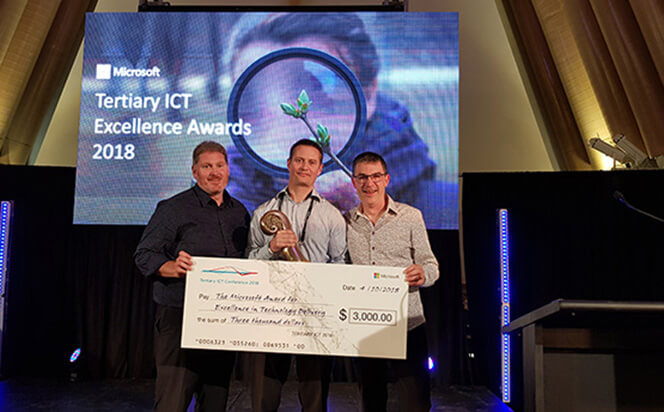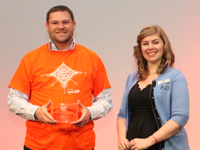Virtual Medical Coaching in Academic Journals
 Virtual reality training for radiation safety in cardiac catheterization laboratories - an integrated study
Virtual reality training for radiation safety in cardiac catheterization laboratories - an integrated study
Introduction The advent of fluoroscopically guided cardiology procedures has greatly improved patient outcomes but has also increased occupational radiation exposure for healthcare professionals. This has led to adverse health effects, including radiation-induced cataracts, alopecia, and cancer, emphasizing the need for effective radiation safety training.
Limitations of Traditional Training Methods Traditional radiation safety training methods often rely on passive learning, which fails to adequately simulate the dynamic environment of the catheterization laboratory. This gap highlights the potential for alternative training methods that can provide a more realistic learning experience.
The Promise of Virtual Reality (VR) in Radiation Safety Training Virtual Reality (VR) offers a promising solution by creating immersive, interactive experiences that mimic real-world scenarios without exposing healthcare professionals to radiation risks. This study evaluates the effectiveness of VR-based training compared to traditional approaches.
Study Design We conducted a prospective cohort study involving 48 healthcare professionals working in a catheterization lab. Each participant completed a 1-hour self-directed VR training session using Virtual Medical Coaching's RadSafe VR software, which simulates realistic clinical scenarios.
Data Collection and Assessment Methods To measure outcomes, we recorded pre- and post-intervention radiation dose levels using personal dosimeters at the eye, chest, and pelvis. Additionally, knowledge and skills were assessed through tests, with feedback collected via surveys and interviews.
Results The statistical analysis showed a significant reduction in radiation exposure across all professional groups following VR training:
- Cardiologists: Eye dose decreased by 21.88% (2.88 mSv to 2.25 mSv), chest dose by 21.65% (4.11 mSv to 3.22 mSv), and pelvis dose by 21.84% (2.06 mSv to 1.61 mSv).
- Perioperative Nurses: Eye doses fell by 14.74% (1.56 mSv to 1.33 mSv), chest doses by 26.92% (2.6 mSv to 1.9 mSv), and pelvis doses by 26.92% (1.3 mSv to 0.95 mSv).
- Radiographers: Eye doses were reduced by 18.95% (0.95 mSv to 0.77 mSv), chest doses by 42.11% (1.9 mSv to 1.1 mSv), and pelvis doses by 27.63% (0.76 mSv to 0.55 mSv).
Participant Feedback Participants reported greater engagement and an improved understanding of radiation safety. They also expressed a preference for VR-based training over traditional methods.
Cost Analysis A cost analysis revealed the economic benefits of VR training, demonstrating significant savings in staff time and rental costs compared to traditional approaches.
Conclusion Our findings suggest that VR is an effective and cost-efficient tool for radiation safety training in healthcare, offering significant advantages over traditional training methods.
Assessing the Impact of Virtual Reality Training on Radiation Dose Reduction Among Interventional Radiology Nurses: A Multicenter Crossover Study.
Comparing Clinical Preparedness of Newly Qualified Diagnostic Radiographers Trained With Immersive Virtual Reality vs. Traditional Simulation: A Mixed-Methods Study
Comparing virtual reality and traditional training in radiation safety practices over three years among cardiologists and scrub nurses.
Enhancing Educational Outcomes Through
Hybrid Simulation Methods
Comparative Effectiveness of Immersive Virtual Reality and Traditional Didactic Training on Radiation Safety in Medical Professionals: A Crossover Study
Virtual reality training to enhance clinical competence and student engagement in Ghana.
The effect of non-immersive virtual reality radiographic positioning simulation on first-year radiography students' image evaluation performance
The impact of 3D virtual reality radiography practice on student performance in clinical practice
Student perceptions of the use of three-dimensional (3-D) virtual reality (VR) simulation in the delivery of radiation protection training for radiography and medical students
Comparison of virtual reality and physical simulation training in first-year radiography students in South America
3D virtual reality simulation in radiography education: The students' experience
This Is the Future! Cataloging the Successes of Virtual Reality Simulation
At MCCC, radiography students are using VR technology every day to prepare for careers in the diagnostic imaging field.
Polk State Radiography embraces virtual reality technology
Faculty and staff with Polk State College's Radiography Program are already reporting positive results after only weeks of offering virtual reality technology to their students.
Explore the Impact of VR Training with VMC!
Discover proven ways to boost safety, skills, and confidence in clinical practice.
-
NZIBA
-
ENZ
-
HealthTech
-
Tertiary ICT
-
Learning Solutions
-
GHP

We have been selected as one of the finalists for the Best Emerging Business category at the New Zealand International Business Awards 2022 (NZIBA). The Awards are run by New Zealand Trade and Enterprise in order to celebrate the success of New Zealand businesses on the world stage and recognise excellence and innovative practice.

The Product Innovation Fund was launched by Education New Zealand to encourage providers to design and develop new education products and services for international learners. We were one of the recipients of this funding.
In June 2022, we presented at the HealthTech Week conference and won the Callaghan HealthTech Award for Best Scale-Up Company.

In October 2018, we won the Microsoft Award for Excellence in Technology Delivery and the Supreme Prize for developing and implementing innovative, world-first, virtual reality training, at the national Tertiary ICT conference awards.

We won first prize from the Florida e-learning association in Best Blended Learning Solution: "Blending VR, eLearning, and Face-to-Face for Radiology Students" during the DemoFest 2017.

Virtual Medical Coaching
Hear what others have to say
One of the most exciting initiatives in my time here has been Virtual Medical Coaching embedding the VR solution.
This is what you'd expect VR simulation to be like.
Great fun and amazingly realistic - an invaluable learning tool for students!
An exciting learning experience that captured all the important aspects of taking x-rays.